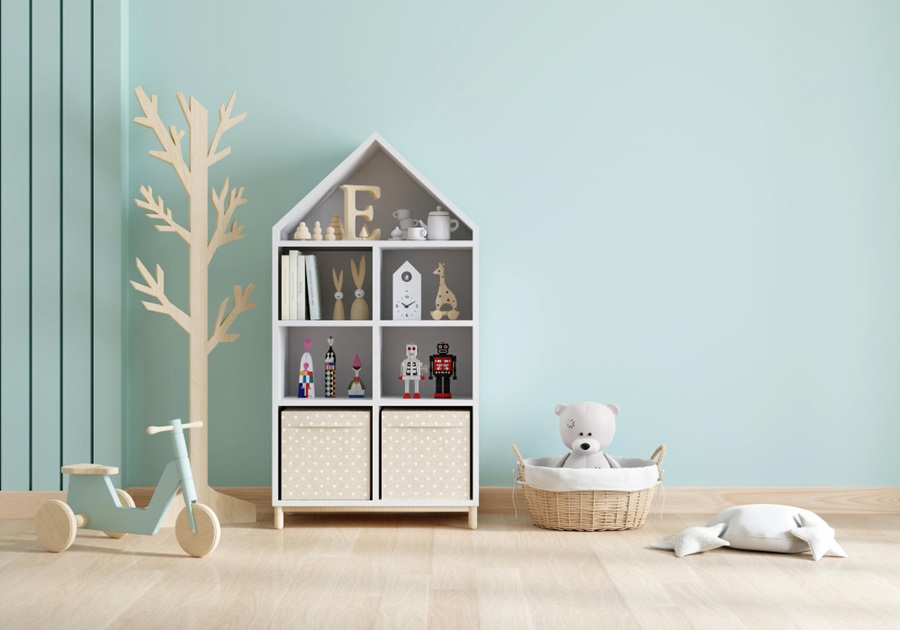Setting up a nursery is one of the sweetest parts of preparing for a baby. It’s where midnight cuddles happen, where first giggles echo, and where everything soft, safe, and lovely is gathered into one little space. But when that space happens to be very little, the decorating challenge can feel a bit more real.
Small nurseries are more common than ever, especially for parents living in apartments, sharing rooms, or making space for a second (or third!) child. Still, a limited floor plan doesn’t mean you have to sacrifice personality, comfort, or style. With the right choices, even the tiniest nursery can feel spacious, functional, and beautiful.
Whether you’re working with a cozy corner or a compact room, there are plenty of clever ways to make every square inch count.
Go Vertical with Decor
When space is limited, walls become your best friend. Think beyond floor lamps and bulky bookshelves—vertical decor can add charm, function, and a touch of personality without taking up a single inch of floor space.
Floating shelves are perfect for storing books, swaddles, or even a sweet collection of stuffed animals. Wall-mounted baskets keep essentials close without cluttering your changing table. And above the crib or dresser, personalized pieces bring warmth and identity into the room. One of the most thoughtful additions? Nursery name signs. These custom wooden signs double as decor and a keepsake, adding a meaningful, stylish focal point that doesn’t intrude on valuable real estate.
Mirrors, lightweight art, or even soft-hued decals can also open up the room visually while keeping the vibe soft and serene. With the right pieces, vertical space transforms from overlooked to essential.
Choose Multi-Functional Furniture
Every item should work overtime in a small nursery. Furniture that offers more than one use is key to saving space and simplifying daily routines.
A crib with built-in storage underneath can hold blankets, diapers, or out-of-season baby clothes. Some models even convert into toddler beds down the road, stretching their usefulness beyond the infant stage. Dressers that double as changing tables are another smart choice, giving you one less piece to squeeze into the room.
Rockers with narrow frames, foldable bassinets, and slim-profile bookcases all fit beautifully into tighter layouts. Choosing a few well-designed, adaptable pieces frees up both physical space and mental bandwidth. When everything has a purpose, it’s easier to keep things tidy and calm.
Minimize, But Make It Meaningful
A small nursery doesn’t need to be filled to feel complete. In fact, keeping things minimal can help the space feel calmer, cozier, and easier to move around in, especially when you’re holding a baby, a blanket, and a bottle all at once.
Rather than filling shelves with decor that doesn’t serve a purpose, choose a few items that mean something. A handmade blanket from a grandparent, a soft-glow nightlight that brings comfort during 3 a.m. wake-ups, or a simple wooden mobile that moves gently in the breeze can give the room a sense of soul without the clutter. If you’re feeling creative, you might even try your first paint-by-number and frame it as a one-of-a-kind piece for your baby’s space.
It also helps to get creative with placement. The Spruce’s round-up of small nursery ideas recommends using vertical book racks or even corner cribs to free up floor space while keeping essentials within reach. These kinds of smart swaps allow your nursery to feel personalized, yet practical.
By focusing on a few thoughtful choices instead of trying to include everything at once, the room becomes intentional and lived-in, never overstuffed.
Soft Colors, Big Impact
Color plays a quiet but powerful role in how a room feels, especially when it’s small. Lighter tones like soft ivory, pale sage, warm beige, or muted blush can make a nursery feel more open and breathable. These hues reflect natural light beautifully, giving the illusion of a larger space even when the square footage says otherwise.
Rather than painting every wall a different pastel, consider choosing one calming base color and building around it with subtle textures. A woven rug, sheer curtains, or natural wood accents can bring depth without overwhelming the room. Peel-and-stick wallpaper in soft patterns is another way to add personality without a permanent commitment.
The goal isn’t to make the nursery feel like a showroom—just a soft, welcoming space where you and your baby can relax. When the palette is gentle, everything else has room to shine.
Use Corners and Nooks Creatively
In a small nursery, the spaces you’d usually overlook—the corners, the backs of doors, even the side of a dresser—are full of potential. A floating shelf in a corner can hold bedtime books or a monitor. Over-the-door organizers can store diapers, lotions, and burp cloths without eating up precious drawer space. Wall hooks keep baby gear tidy and within reach.
Even a slim rocking chair or narrow laundry hamper can fit beautifully into a snug layout when placed with care. These simple shifts create more breathing room and allow the space to support your daily rhythm, rather than slow it down.
A thoughtful approach to creating a calming nursery that merges functionality and style can make even the smallest room feel intentional, nurturing, and entirely your own.







